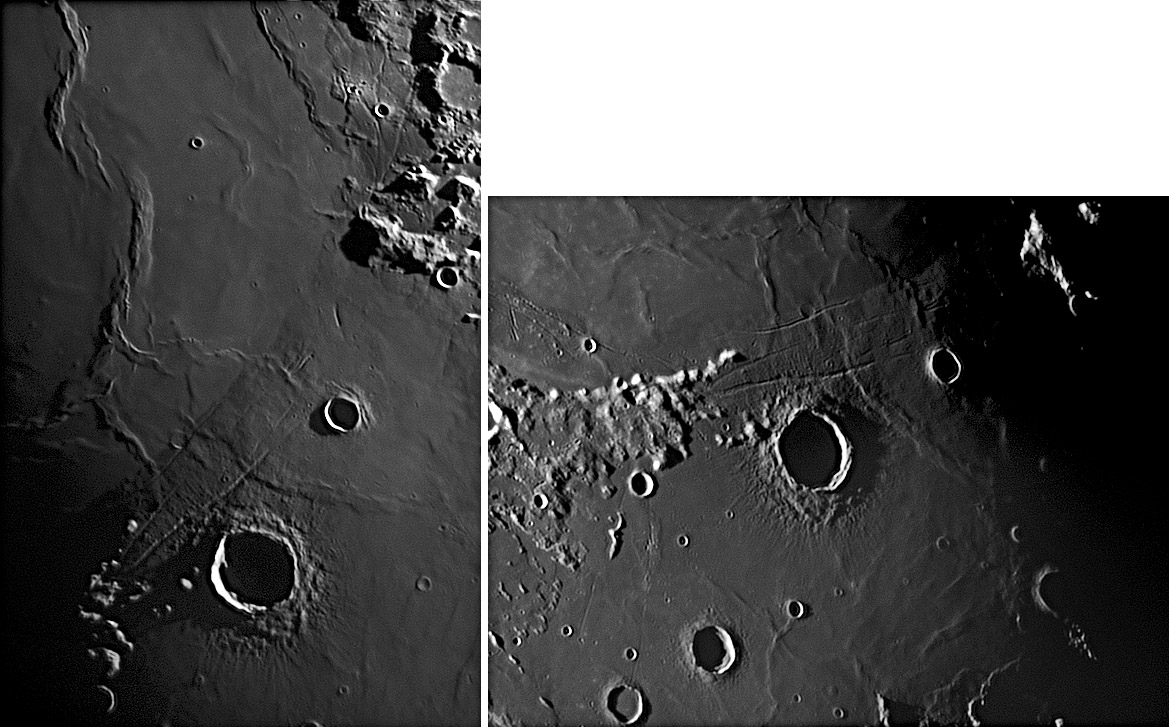November 30, 2009
One Tidbit in Images Full of Details

image by Jocelyn Sérot, France
I've always thought of Plinius as a staid crater, even though its position suggests a fortress guarding a strait. But with Jocelyn's two low and opposing Sun views the crater and its relation to the surroundings are more dramatic and more interesting. Both images show that the crater definitely formed on top of the mare lavas of northern Tranquillitatis. The ridges and furrows of the continuus ejecta deposit that extend out from the glacis (the wreath of elevated rim material) covers the mare, but unfortunately don't extend far enough to the north to see if the crater formed after the lighter-hued younger lavas in the center of Serenitatis. But there are other overlap relationships which provide hints. Notice the nearby linear Plinius Rille that points toward Dawes to the right. That rille is believed to have formed when the Serenitatis Basin subsided due to the added load of the mare lavas. But we don't know if the rilles formed following the main flooding of the basin or the more recent limited central flooding. The fact that ejecta from Plinius fills part of the rille, means that at least some of the Serenitatis lavas are older than the impact that created Plinius.
Chuck Wood
Technical Details
Right: 2009-06-13; 3h30 TU. Mewlon 210 + Barlow 2x (F=5070 mm) + Astronomik Red filter + DMK 31AF03 camera.
Left: 2009-05-29; 19h59 TU. Same equipment. Note - I have over enhanced these images to maximize interpretability - see Jocelyn's website to see his more tonally continuous processing.
Related Links
Rükl plate 24
Jocelyn's lunar images
Yesterday's LPOD: Faces of the Moon
Tomorrow's LPOD: Massive Map of Little Impact
COMMENTS?
Register, Log in, and join in the comments.



